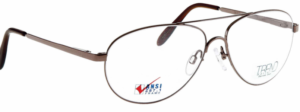What are polycarbonate lenses?
When it comes to protecting a person’s eyesight, there is one consensus: no expense should be spared, since our capacity to see is of utmost importance in our day-to-day lives. That’s very easy to say, but not that easy to put into practice. How can we accurately tell the difference between real, impactful changes in the technology behind glasses and meaningless, cosmetic enhancements that do us little good, or worse, even affect our eyesight? Although there are lots of sides of this questions that require consideration, today we will only touch one: polycarbonate lenses.

Polycarbonate is a relatively modern and very versatile material. The initial purpose of the material was for covering cockpits in fighter planes, due to the excellent resistance the material has as well as useful optical features. After some years of outstanding results, NASA also used polycarbonate lenses in its outer space missions, with overwhelming success. It then became apparent that polycarbonate was clearly something which should be used in every possible domain. Nowadays, it is used as “bulletproof glass” for riot police shields, in motorcycle windshields, athletic eyewear, and many other fields.
We might make polycarbonate lenses sound near-perfect, offering much of what any person needs when it comes to vision and protecting their eyes. While we do not believe that polycarbonate has no flaws, we also want to detail the advantages and disadvantages of using this material for your prescription lenses.
Advantages:
– Toughness. It goes without saying that the main advantage of polycarbonate lenses is their impact resistance. It is particularly hard to scratch or break these lenses, making them ideal not only for day-to-day use, but also in more action-prone areas – for example, for athletes and children. We all know how hard it is to find good, comfortable glasses for our children which they can also use when playing. Polycarbonate lenses fix a lot of those issues.
– Lightweight. The material is lighter than standard plastic or glass lenses, making glasses far less likely to slide down the wearer’s nose or cause significant discomfort when used for prolonged times.
– Thinness. Although not necessarily a huge advantage, it’s worth mentioning that polycarbonate lenses are around 20% thinner than plastic or glass ones, making them ideal for people who want more stylish and attractive eyeglasses.
– UV and Blue Light Protection. Polycarbonate is a natural UV filter, protecting the eyes of the wearer from harmful ultraviolet rays.
Disadvantages:
– Polycarbonate lenses are more expensive than standard plastic lenses. While it’s fair to say that it’s important to invest in quality eyewear, we are well aware that price can be a critical factor when purchasing any product, including glasses.
– Optical quality is not as high as high index lenses or standard CR39 plastic.
That being said, we hope we managed to shed some light on the advantages and disadvantages of polycarbonate lenses. They are high-quality, durable lenses which will protect their owner from multiples threats including physical damage and UV radiation.

Comments are closed.